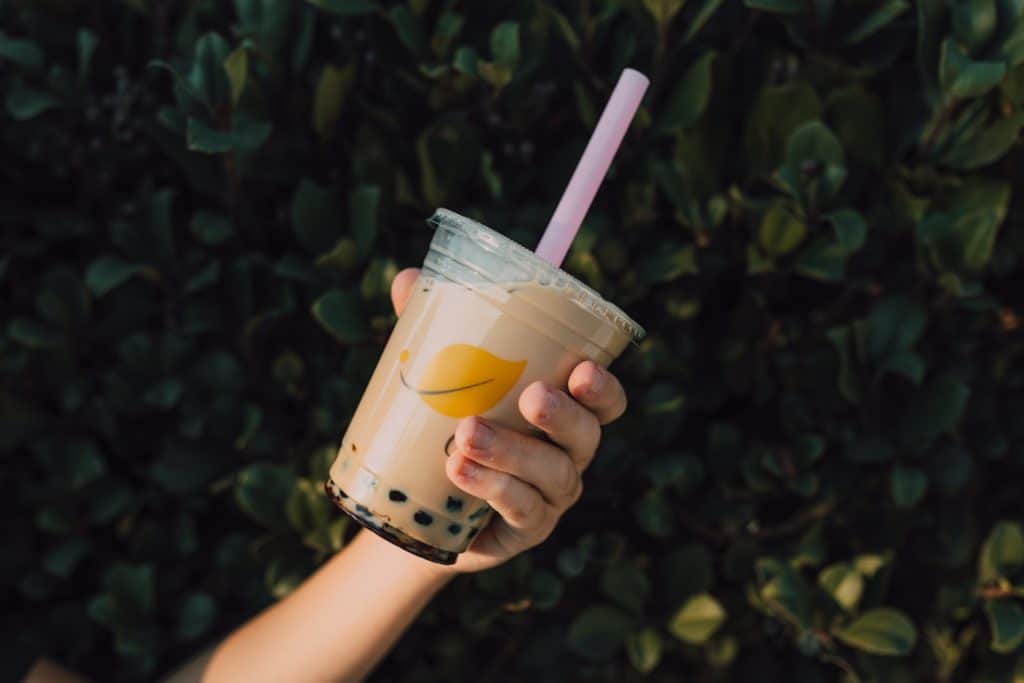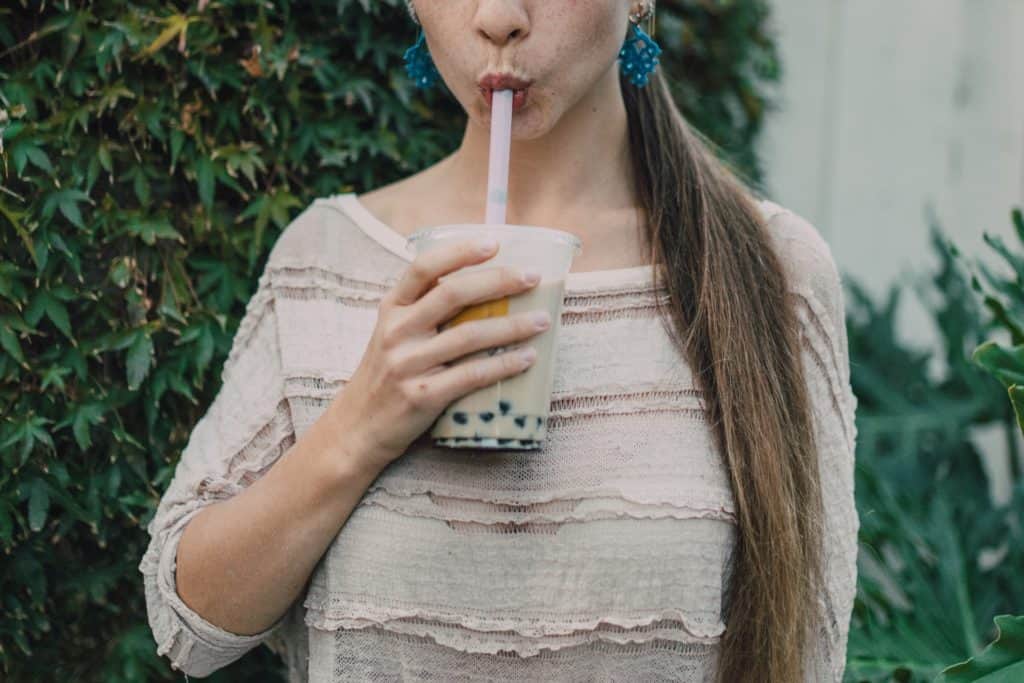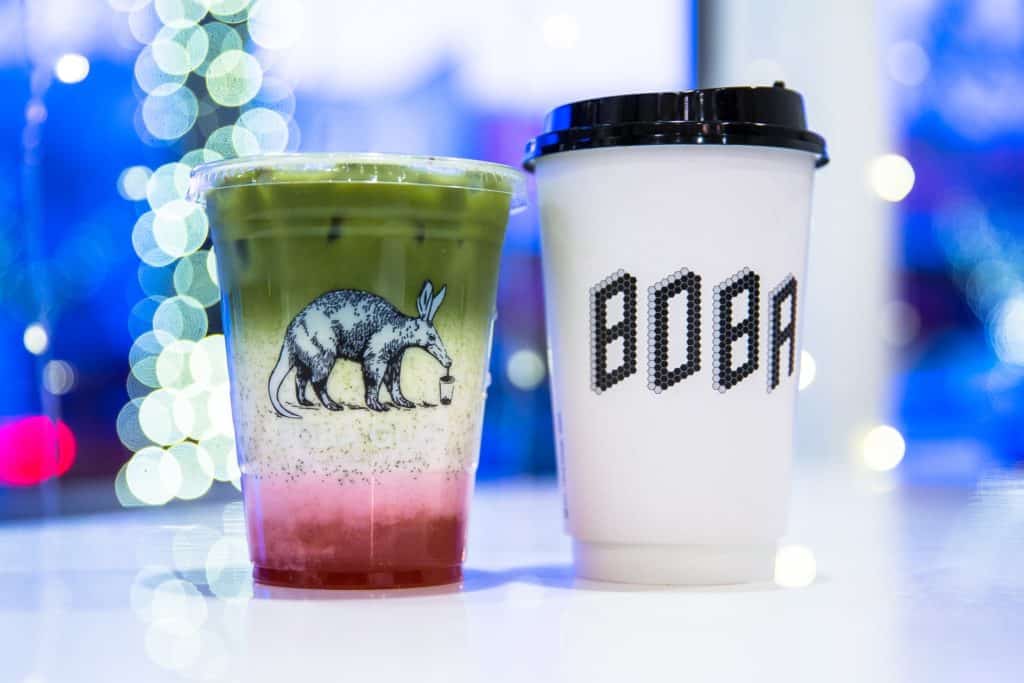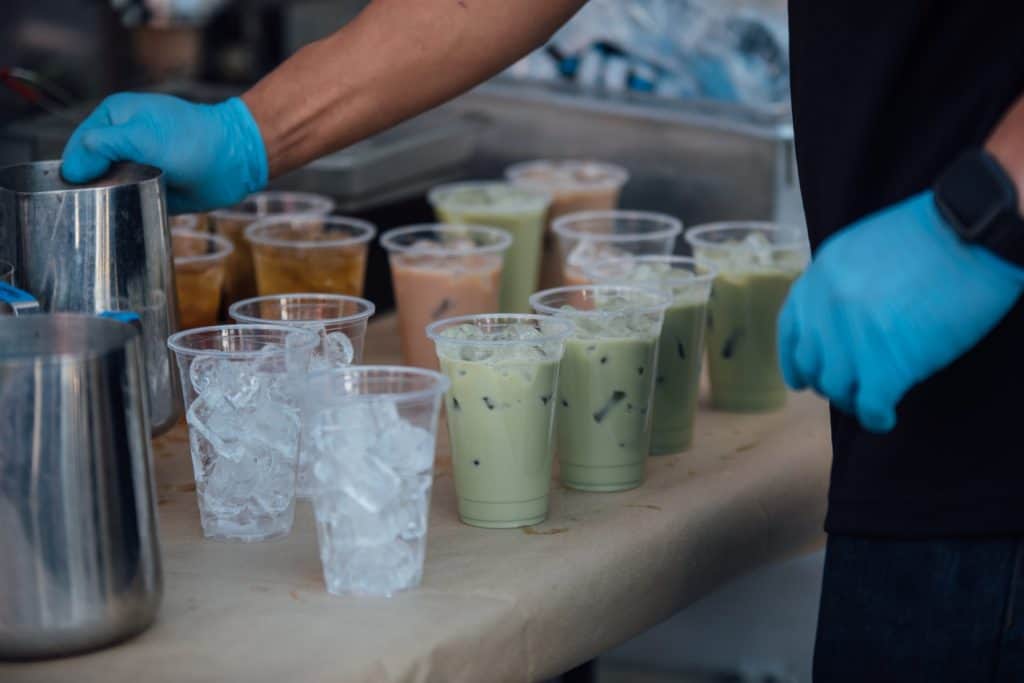I was in New York City when I first heard of Bubble tea. My friends insisted I try it. This was many years ago and Bubble Tea is now a national if not world craze Bubble tea or Boba is everywhere!!
What is bubble tea, and more than that what were those amazing balls at the bottom of my cup? Tapioca was the amazing pearls at the bottom of my drink. What is tapioca and where did it come from?

Things to consider before putting tapioca in your cup
The tapioca in bubble tea makes for an interesting drink. It’s a high sugar and carbohydrate beverage that tastes amazing. Not much of a nutritional beverage as it is a fad. Green or
Saying that I have to admit I’ve had my share of bubble teas and enjoyed each one. The straw is fun, also fun. It’s larger and sucks up those tapioca pearls and if you are not careful could be a choking hazard.
The fun part of the tapioca pearls would be to make them.
While it’s fun to make it also requires attention while cooking.
Tapioca is safe for most people to consume. There have been reports of toxicity in tapioca. Those reports were soon re-examined and determined not to be true. The biggest problem with Tapioca and Bubble tea is the sugar and carbohydrates.
While bubble tea is tea-based some may think of it as a healthy drink. The opposite is more the case. With little nutritional value and that sugar and carbohydrates.
Bubble tea is a fan favorite around colleges and universities. It’s a late-night pick-me-up and a fun place to hang out during the weekends.
Enjoy your occasional bubble tea and you will be fine. All things in moderation.
Here comes the Tapioca and Bubble Tea
This is a tea blog. The topic of tapioca will lead us to the beverage it is most commonly used in.
Bubble tea had its first start in Taiwan. From there bubble tea spread to the United States, as well as other countries. Through its cult following amongst the college-age generation.
No one knows the real history of bubble tea other than it was first created in Taiwan. More than that it is speculation and rumor.
The base of bubble tea is tea but the real star of bubble tea are the translucent sweet pearls at the bottom of the cup. The tapioca pearls.
Tapioca comes from the cassava plant. That plant was brought to South American and the African regions by Portuguese and Spanish Colonists. Besides making tapioca the cassava root is also mashed into soups or fried into fries. I’ve recently found the Yuca root in a local store. The cassava plant is a versatile plant. It is used for many things including the thickening of soups and desserts.
The plant is easy to grow and harvests in 18 months from start to harvest. Most cassava plants are grown from propagules (cuttings) from mature plants. These harvest from 8-12 months.
The flour for the tapioca is taken from the starch of the cassava root. That starch is made into a powder, mixed with water, flavors, and dyes. Then it is rolled, cut, and shaped into pearls. From there it is cooked in a syrup mixture taking the neutral taste to a sweet one. The texture is chewy.
Pro’s
- Adds bulk to many soups and desserts
- Is the fun in bubble tea
- Easy to digest by most people
- Inexpensive
- Easy to get
- Gluten-Free
- Nut-free
- Grain-free
Con’s
- High Sugar Content
- No real nutritional value
- High in Carbs
Want to make your own bubble tea?
Making bubble tea is a process. To make your own bubble tea is rewarding as well as being able to create the boba tea your way. Including sweetness and the amount of those delicious boba pearls. Below are some of the products we believe to help you on your way. Included are top-of-the-line tapioca pearls. Also, some complete bubble tea kits make things that much easier.
LOOSE LEAF TEA. Not artificial milk tea mixtures or powders. Premium Bubble Tea Kit Includes: Organic Matcha, Organic Earl Grey Lavender, Premium Jasmine, Boba, Locca California Bubble Tea Recipe, and 8 Black Boba Straws
If you just do not want to make or create your own bubble tea. Here is a variety bundle of boba tea in a can. I personally have enjoyed boba tea in a can and it’s really not that far off from the store-created ones.
Recipes to create your own bubble tea from scratch
Ingredients:
Serves 2
- 2 cups water
- 6
black tea bags - ½ cup medium black tapioca pearls
- 2 cups brown sugar
- 1 cup hot water
Assemble
- ½ cup tapioca pearls, cooked
- ½ cup ice
- brown sugar syrup, to taste
- 1 cup
black tea , chilled - ¼ cup half & half
Preparation
- In a medium pot over high heat, combine the water and tea bags. Bring to a boil, then remove the pan from the heat and let the tea cool to room temperature.
- Bring a medium pot of water to boil over high heat. Once the water is boiling, add the tapioca pearls and boil until softened, about 20 minutes.
- Drain the pearls through a strainer.
- Set the strainer with the pearls over a medium bowl. Add the brown sugar to the strainer and pour the hot water over.
- Stir to dissolve the brown sugar.
- Soak the pearls in brown sugar syrup for 30 minutes. Store the bubbles and syrup separately until ready to serve.
- Assemble the tea: Divide the pearls and ice between 2 glasses, then add the brown sugar syrup, tea, and half and half.
- Stir with a wide-opening straw, then serve.

The benefits of tapioca and bubble tea
One of my grandmother’s favorite desserts was tapioca pudding. I was five years old and I could never imagine EVER eating a tapioca pearl. . Today whenever I get a chance I love to have a bubble or boba tea. It’s interesting as you grow and learn to experience things. Now those tapioca pearls cause me to remember my grandmother and her tapioca pudding. I bet she would have loved bubble tea.
Bubble tea is also known as Boba, Pearl, or Tapioca tea. Bubble tea can be made with tea, milk, sugar, honey, tapioca pearls, fruits, and any variation you’d like to make it.
4 FLAVORS IN 1 KIT - Our DIY bubble tea set comes with 4 classic flavors: taro, honeydew, mango, and strawberry. Each flavor is in 3-in-1 pre-mix powder form and comes in 6-ounce packs.
What are tapioca pearls?
Tapioca pearls are made from starch. This starch is taken from the Cassava plant’s root. The starch can be made into flour and mixed, cut, and made into tiny Boba Balls.
Who created bubble tea?
While no one knows who or why bubble tea was created, I can verify the world is a better place with it.
Most often you will hear credit going to Liu Han Chie, who is the owner of Chun Shui Tang tea house in Taichung. It is said that at some point someone decided to drop the very bland, now sweetened tapioca into a glass of tea. The tea world will never be the same. The chewy drink originates in Taiwan. In the 1980s a beverage visionary decided to put the pearls into a cup of sweetened iced tea, NPR reported. Many tea companies claim they invented the beverage. Credit is frequently given to Liu Han Chie. Liu is the owner of Chun Shui Tang teahouse in Taichung, according to The Daily Meal.
Are tapioca pearls healthy?
Tapioca pearls are not considered healthy. They are high in carbohydrates and if soaked in syrup the sugar content also is very high. The tapioca itself is almost 100% carbohydrate. There are other nutritional elements but very small even trace amounts.
One cup of dried tapioca pearls contain:
- 544 calories
- 135 grams of carbohydrates
- There is no fat and no protein
Nutritional chart for tapioca pearls from the USDA
1/2 cup (76g) of dry, pearl tapioca
- Calories: 272
- Fat: 0g
- Sodium: 0.8mg
- Carbohydrates: 67.5g
- Fiber: 0.7g
- Sugars: 2.5g
- Protein: 0.1g
- Tapioca is Gluten Free
Being gluten, nut and grain-free tapioca is a choice of many people with celiac disease, gluten sensitivity. As well as nut allergies. Many gluten-free recipes use tapioca powder for allergen-free baking.
Tapioca is a source of calcium and iron
Because so many people are in need of calcium tapioca pearls contain 30.4 milligrams of calcium. This can help supply the loss of calcium through exercise and normal body functions.
One cup of tapioca pearls has 7-18 mg of iron. Yet you may need to consume vitamin C to help with absorption.
Tapioca is fat-free
While not much in health benefits there is very little if any fat in tapioca pearls. Those on keto diets would be disappointed.
What do tapioca pearls taste like?
Tapioca itself has little to no flavor. The flavor comes after the balls are boiled in a sugary liquid. Food coloring and flavors can be added during the mixing process.

What are tapioca pearls made of
Tapioca comes from the root of the cassava plant. Starch is taken from that root, dried, and made into a powder. That powder is then mixed with ingredients to create the pearls.
Is Tapioca Gluten-Free?
Yes, it is
Can tapioca pearls be dangerous
Tapioca pearls may contain traces of acetophenone and styrene. This does not mean that they are toxic or pose a serious health threat. The most pressing health concern about bubble tea is the high amounts of carbohydrates. These carbs are found in tapioca balls, which can certainly lead to an unhealthy diet.
Another disputed health claim is the carcinogenic chemicals in the tapioca samples. This dispute was researched at the University Hospital Aachen
These particles were found in sample tapioca balls from an unnamed chain in Germany. The tapioca came from Taiwan. Since the findings, there has been a great debate. Wang Can-geng is also disputing these concerns. Wang is a leading manufacturer of bubble tea.
There is a call to refute these warnings but yet enough concern for this author to include in my article.
Why is bubble tea so addictive?
SUGAR!!!! Here is an article about the addictive nature of sugar!
What does boba stand for?
Interestingly enough Chinese people do not use the word Boba to describe bubble tea. If you speak Taiwanese you will understand why. It translates to “big breasts”. In Spanish, the word means “foolish” or “fool”.
Alternatives for tapioca pearls
Blueberries – While not giving the exact mouthfeel, taste, or texture. It’s definitely a healthier option for the tapioca pearls. I am not sure the blueberries will stay on the bottom. They will fit in the straw.
Clear Jel – This can be a good substitute if you have it handy. It can be hard to find. It does make a great substitute because it’s a modified food starch and reacts the same way that tapioca does. Clear Jel is used in canned pie fillings and is a thickening agent for jams and jellies.
Jelly Strips – You can make jelly with gelatin and cold water. These won’t’ be balls but can be cut into pieces. You can also flavor them with teas as well. They will be a bit chewier than the Tapioca. If you use grass-fed gelatin you can add a bit of nutrition to your bubble tea.
This recipe from MNN for how to make Jelly Strips.
Jelly Strips or bites for Bubble Tea
- Mix together 2 tablespoons of gelatin with ¼ cup of cold water. Let sit while you do step
- Brew two bags of Jasmine green tea (organic and fair trade preferred) in ¾ cup of hot water for 5-6 minutes.
- Squeeze tea bags into the cup, and stir in 2 tablespoons of sweetener of choice (I used honey)
- Add to the bowl of gelatin and water.
- Stir to melt the gelatin. (If the tea is no longer hot enough to completely melt the gelatin, simply pour into a small saucepan and heat gently until it has just dissolved.)
- Pour into a loaf pan and refrigerate until it has set.
- Once it has set, run a knife around the edge of the pan to help loosen it, and turn it out onto a cutting board. Cut into bite-sized pieces and use 3-4 tablespoons per cup of bubble tea.

Conclusion
While we have to all agree that bubble tea is not a healthy drink. Tapioca as well is nothing more than a starch full of carbohydrates. But put the drink all together and you have a fun and enjoyable beverage that you can enjoy now and again.
My motto is everything in moderation. I compare a bubble tea beverage to that occasional donut some of you may pick up on your way to work. It’s enjoyable and tastes amazing. Will it benefit our bodies, probably not? But every now and again we need that sweet something to boost our soul.
So go enjoy your bubble tea, enjoy those tapioca balls through that large straw, and remember to take a selfie!






